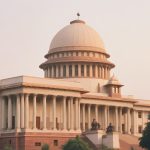Intersections of Medical Ethics and Legal Medicine: Navigating Healthcare and Legal Landscapes

INTRODUCTION –
The public’s concern about medical matters has significantly increased lately. Professionals like lawyers, philosophers, theologians, and doctors are actively engaging in discussions and analyses regarding the challenges in modern medical practice. Patients are more informed about their rights. With a more consumer-focused society, it’s expected that complaints and issues will surface. In the absence of a better platform, patients may turn to courts to address these concerns.[1]
Medical Ethics and Legal Medicine represent two vital pillars at the confluence of healthcare and jurisprudence. The intricate relationship between these domains profoundly influences the delivery of healthcare services, patient rights, and the resolution of legal disputes involving medical expertise.[2]
PATIENT RIGHTS AND INFORMED CONSENT –
The concept of patient rights, fundamental to both medical ethics and legal medicine, emerges as a critical intersection. In healthcare, informed consent is a central ethical and legal obligation, ensuring patients are fully aware of and understand the potential risks and benefits of a medical procedure or treatment plan.
Patient rights, which include informed consent, confidentiality, and privacy, are the foundation of ethical practice. These principles require healthcare practitioners to respect patient autonomy, maintain confidentiality, and put the well-being of those in their care first. Furthermore, negotiating the complex ethical landscape entails preserving professional behavior, honesty, and trust within the healthcare provider-patient connection.
In India, the Supreme Court case of Samira Kohli v. Dr. Prabha Manchandra & ANR,[3]emphasized the importance of informed consent, stating that without it, a medical professional’s actions could be deemed as assault or battery. Similarly, the American case of Schloendroff v. Society of New York Hospital, [4]set a precedent that “every human being of adult years and sound mind has a right to determine what should be done with his own body”.
Doctors haven’t avoided the shift away from the hands-off approach, which has been actively promoted by the legal system and supported by Parliament. Whether due to the newfound autonomy and insight of today’s more educated and sophisticated public or for other reasons, patients are now more inquisitive and eager to participate equally in the doctor-patient relationship. When they feel excluded, they become dissatisfied and inclined to challenge the doctor’s decisions.[5] The growing inclination to turn to the legal system in what might be termed disputes between doctors and patients is likely a direct outcome of this trend.[6]
Consequently, the realms of law and medicine are increasingly intersecting. Typically, courts get involved when harm has occurred, and the patient is seeking compensation through a medical negligence lawsuit.
On the other hand, Legal Medicine intertwines medical knowledge with legal proceedings, playing a pivotal role in resolving disputes where medical expertise is paramount. It extends its reach into various legal cases, including malpractice suits, disability claims, and assessments related to mental health and competency.[7]
In these scenarios, medical professionals serve as expert witnesses, offering critical insights and opinions based on their medical expertise. Their testimony often influences the trajectory of legal cases, providing judges and juries with crucial information to make informed decisions.
MEDICAL MALPRACTICE –
Another significant intersection between medical ethics and legal medicine is the issue of medical malpractice. Medical practitioners have an ethical obligation to provide standard care to their patients, and failure to meet this standard can lead to legal consequences.
Certainly, in Indian Jurisprudence, several cases have highlighted the intersection of medial expertise with legal proceedings, especially in cases involving medical malpractice, disability claims, and mental health assessment, similarly in the landmark case of, Dr. Suresh Gupta v. Govt. of NCT of Delhi & Anr, [8]demonstrated that a medical practitioner could only be held criminally liable for an act that showed such a high degree of negligence that it could be termed as ‘gross negligence’ or ‘recklessness’, this case emphasized the significance of expert medical testimony in cases related to mental health. The court acknowledged the importance of qualified medical professional’s opinions in determining the mental competence of individuals involved in legal cases. Similarly, other instances such as in the case of Jacob Mathew v. State of Punjab, 2005, [9]this case is often cited in medical negligence cases in India. It established guidelines for determining medical negligence and emphasized the importance of expert medical opinion in such cases. The Hon’ble Supreme Court highlighted the significance of expert witnesses and their crucial role in providing into complex medical issues.
Furthermore, in the case of Indian Medical Association v. V.P. Shantha & Ors, 1995[10], in this instance the case focused around on the liability of medical practitioners and hospitals in case of medical negligence. The judgement stressed the need for expert medical opinion to establish negligence and highlighted the role of medical expertise in legal proceedings.
Also, in another instance of Suresh Gupta v. Government of NCT Delhi & Anr, 2004[11], this case emphasized the significance of expert medical testimony in cases related to mental health. The Court acknowledged the importance of qualified medical professionals opinion in determining the mental competence of individuals involved in legal disputes.
The synergy between Medical Ethics and Legal Medicine is evident in the courtroom, where the ethical obligations of healthcare providers intersect with legal mandates. Instances involving alleged malpractice demand a careful examination of both ethical standards and legal requirements.
Determining the balance between what is ethically sound in patient care and what adheres to legal statutes poses intricate challenges for healthcare practitioners and legal experts alike. Moreover, the ethical considerations surrounding patient consent and confidentiality often intertwine with legal regulations, necessitating a nuanced understanding of both realms.
The intersection of Medical Ethics and Legal Medicine is crucial in guaranteeing the provision of morally acceptable treatment while negotiating the legal complexities inherent in the medical profession. Understanding and harmonizing these areas is critical for healthcare practitioners, legal professionals, and legislators in order to protect patients’ rights, assure ethical practice, and negotiate the intricacies of legal processes including medical knowledge.[12]
MEDICAL CONFIDENTIALITY AND LEGAL DISCLOSURE –
Medical confidentiality is a fundamental principle in healthcare, requiring medical professionals to keep patient information private unless consent is given for its disclosure. However, there are certain situations where the law mandates disclosure, such as in court orders or public health crises. Navigating these situations requires a delicate balance between ethical obligations and legal duties.
- The Principle of Medical Confidentiality –
Medical confidentiality is deeply rooted in the principles of medical ethics, and it forms the basis of the doctor-patient relationship. It ensures trust between the patient and the healthcare provider and encourages full disclosure of information, which is essential for accurate diagnosis and effective treatment.
The Indian Medical Council (Professional Conduct, Etiquette, and Ethics) Regulations, 2002, underscores the importance of confidentiality. Regulation 7.14 states that physicians must not disclose anything that has been revealed to them in confidence unless required by law or public interest.[13]
- Legal Disclosure and Court Orders –
While the principle of confidentiality is paramount, there are circumstances where the law mandates disclosure. For instance, under Section 39 of the Code of Criminal Procedure, 1973, medical professionals are obligated to report any case of injury due to a criminal act, rash or negligent act, or suspicious death.[14]
In the landmark case of Mr. ‘X’ vs. Hospital ‘Z’, the Supreme Court of India held that the right to confidentiality could be overridden by the larger interest of protecting public health. In this case, the Court permitted the disclosure of a patient’s HIV status to his fiancé, despite the patient’s objections, citing the need to prevent the spread of the disease.[15]
HEALTH CRISES AND MANDATORY REPORTING (Balancing Confidentiality with Legal Duty) –
In public health crises, the ethical duty to maintain confidentiality may conflict with the need for transparency and data sharing. The Epidemic Diseases Act, 1897, empowers the government to take necessary measures, which may include mandatory reporting of cases, to prevent the outbreak or spread of a disease.[16]
Navigating the intersection of medical confidentiality and legal disclosure requires sensitivity and judicious judgment. Medical professionals must balance their ethical obligations with their legal duties, always keeping the patient’s best interests and public health considerations in mind.
Maintaining medical confidentiality while adhering to legal mandates for disclosure presents a complex challenge for healthcare professionals. As they navigate this complex terrain, their guiding principle should always be the welfare of the patient and the broader public.
END OF LIFE DECISIONS (EUTHANASIA) –
End-of-life decisions, including euthanasia and physician-assisted suicide, also reflect intersections of medical ethics and legal medicine. These decisions test the balance between a patient’s right to autonomy and a doctor’s ethical responsibility to do no harm.
End-of-life decisions are intricate landscapes where medical ethics intertwine with legal considerations. Within this realm, euthanasia and physician-assisted suicide present profound ethical and legal challenges, balancing a patient’s autonomy against a doctor’s ethical obligations to prevent harm.
In India, the Aruna Ramchandra Shanbaug vs. Union of India,[17] case marked a pivotal moment. It allowed for passive euthanasia under exceptional circumstances, establishing a crucial precedent. Passive euthanasia involves withdrawing life support or medical treatment when the patient is in a vegetative state or terminally ill, in accordance with the patient’s previously expressed wishes or through a guardian’s consent. This case recognized that in specific situations where a patient’s quality of life is significantly compromised, allowing the withdrawal of life support could align with their best interests and dignity.
Similarly, in the United States, the Vacco v. Quill,[18] case took a different stance. It determined that there was no constitutional right to assisted suicide, specifically physician-assisted suicide. The judgment emphasized the state’s interests in safeguarding life and preventing suicide, viewing assisted suicide as contrary to these interests. This ruling highlighted the significance of preserving life and the ethical complexities surrounding physician-assisted suicide, particularly in the context of the doctor’s role in ending a patient’s life.
These contrasting legal decisions illustrate the diverse approaches taken by different jurisdictions regarding end-of-life choices. They demonstrate the delicate balance between respecting a patient’s autonomy and dignity and the broader ethical considerations and societal interests in preserving life, shaping the landscape of end-of-life care and the boundaries of medical and legal ethics.
CONCLUSION
The intersections of medical ethics and legal medicine are both complex and necessary, requiring healthcare professionals to navigate intricate ethical and legal landscapes. By understanding such intersections, we can create a more patient-centric healthcare system that respects individual rights and autonomy while upholding the highest ethical standards in medical practice.
Maintaining medical confidentiality while adhering to legal mandates for disclosure presents a complex challenge for healthcare professionals. As they navigate this complex terrain, their guiding principle should always be the welfare of the patient and the broader public.
[1] 2 A. Simanowitz, “Action for the Victims of Medical Accidents” 54 Medico-Legal J. 104 (1986).
[2] Consumerism in the health context see, I. Kennedy, The unmasking of Medicine (1983) Ch. 6.
[3] Samira Kohli vs. Dr. Prabha Manchanda & Anr, (2008) 2 SCC 1.
[4] Schloendorff v. Society of New York Hospital, 105 N.E. 92 (N.Y. 1914).
[5] The Emergence and Rise of Medical Law and Ethics: Andrew Grubb Source: The Modern Law Review, Mar., 1987, Vol. 50, No. 2 (Mar., 1987), pp. 241-267.
[6] I. Kennedy Supra.
[7] Lennox-Wright [19731 Crim.L.R. 529. This doctrine has been regarded as almost obscclescent in the recent case of R. v. fIorseferry Road Magistrates, ex p., IBA 11986] 2 All E. R. 666 (D.C.).
[8] Dr. Suresh Gupta v. Govt. of NCT of Delhi & Anr, AIR 2004 SC 4091.
[9] Jacob Mathew v. State of Punjab (2005) 6 SCC 1.
[10] Indian Medical Association vs V.P. Shantha & Ors on 13 November, 1996 AIR 550, 1995 SCC (6) 651.
[11] SC 4091: (2004)6 SCC.
[12] Basil Varkey, Principles of Clinical Ethics and their application to practice, 2021 Feb; 30(1): 17-18, 2020 Jun 4.
[13] Indian Medical Council (Professional Conduct, Etiquette, and Ethics) Regulations, 2002.
[14] The Code of Criminal Procedure, 1973 – Section 39.
[15] Mr. ‘X’ vs. Hospital ‘Z’, AIR 1999 SC 495.
[16] The Epidemic Diseases Act, 1987.
[17] Aruna Ramchandra Shanbaug v. Union of India, (2011) 4 SCC 454.
[18] Vacco v. Quill, 521 U.S. 793 (1997).
 English
English 



